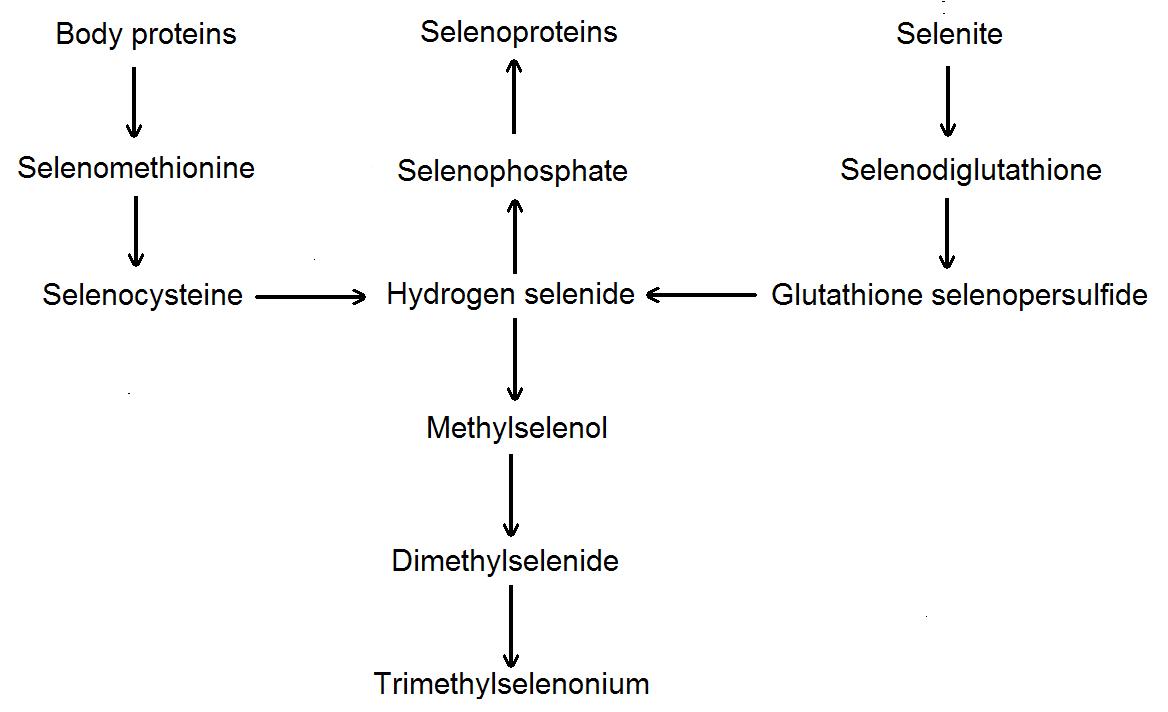A clinical trial to assess the effects of 200µg selenium per day from brewer’s yeast on in 1312 patients with skin cancer found no significant effects. However, the researchers were surprised to see that following the 4.5 year study, the patient in the selenium group had a 54% lower prevalence of lung, colon or prostate cancer1. Since this landmark study conducted by Clark, numerous animal studies have supported this original finding that selenium plays a role in cancer prevention. The evidence submitted by Clarke was not the first to show a possible beneficial effect of selenium on cancer, as previously associations had been reported between selenium levels in crops and diet with cancer mortality. More recently, meta-analysis of the protective effects of selenium have been performed and show that selenium plasma levels are a more reliable predictor of cancer mortality than vitamin A, E or β-carotene.
Despite reports of the association between selenium and cancer mortality, the anti-cancer action of selenium in not fully understood. Research using rats has consistently shown that selenite is not as effective as selenomethionine in raising plasma levels of selenium. However, despite this, rat models appear to show that selenite confers a greater protective effect against cancer. In addition, feeding rats a low methionine diet decreases the protective effects of selenomethionine further. This is despite higher tissue concentrations of selenium that result from the incorporation of the selenomethionine in general body protein in place of the deficient methionine. This suggests that the storage of selenium in body protein reduces the anti-cancer effect of the selenium, because it is sequestered away from normal selenium metabolism through storage in body proteins. The anti-cancer effect of selenium may therefore result from the normal metabolism of selenium.
Organic (selenomethionine, selenocysteine) and inorganic (selenate, selenite) are ultimately both metabolised to hydrogen selenide (H2Se) as shown in figure 1. Hydrogen selenide can then either be used to form the selenoproteins, or can be further metabolised to methylselenol (CH3SeH), dimethylselenide [(CH3)2Se] or trimethylselenonium ion [(CH3)3Se+] via addition of methyl groups from S‑adenosylmethionine. Dimethylselenide and trimethylselenonium are poor candidates for chemoprevention because they are rapidly exhaled in the breath and rapidly excreted in the urine, respectively. Instead, research suggests that the metabolism of selenium compounds to the selenoprotein glutathione peroxidise is the vital step in the chemoprotective effect of selenium. Studies of genetic polymorphisms in glutathione peroxidise have shown that low cellular levels are associated with increase DNA damage, that increase an individuals risk of cancer. Restoring glutathione peroxidise levels in depleted individuals deficient in selenium is probably the chemoprotective mechanism, as has been demonstrated in animal studies.
 Figure 1. The metabolism of selenium.
Figure 1. The metabolism of selenium.
The supplement used by Clark was selenium yeast, that much research has suggests is composed mainly of the organic selenomethionine form of selenium. However, recent data suggests that selenomethionine accounts for only 20% of the total selenium in yeast and in addition there is selenocysteine, Se-methylselenocysteine and other selenium analytes that have not been identified but which make up around 50% of the total selenium content. Most commonly eaten foods are not good sources of selenium for two main reasons. Firstly, soil depletion has reduced the selenium content of many crops. Secondly, only specific plants are known to bioaccumulate selenium to high enough levels make them useful sources of selenium (e.g. Allium and Brassica vegetables). Therefore, to effectively increase selenium intake to the 200 µg dose from the Clarke study, supplementation is necessary, with selenium yeast being the obvious choice to replicate the study results.
RdB
1Clark, L. C., Combs, G. F., Turnbull, B. W., Slate, E. H., Chalker, D. K., Chow, J., Davis, L. S., Glover, R. A., Graham, G. F., Gross, E. G., Krongrad, A., Lesher, J. L., Park, K., Sanders, B. B., Smith, C. L., Taylor, R. 1996. Effects of selenium supplementation for cancer prevention in patients with carcinoma of the skin. Journal of the American Medical Association. 276: 1957–1985
